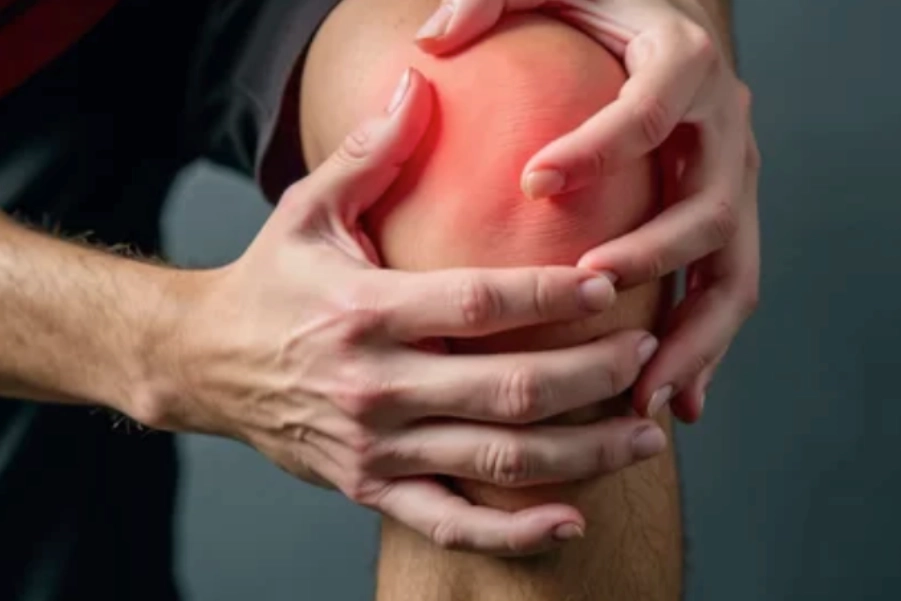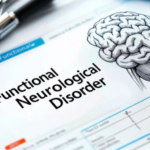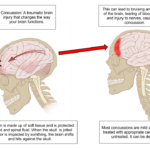Anterior knee pain can result from various underlying conditions, including Patellofemoral Pain Syndrome (PFPS), Infrapatellar Tendinitis, Osteochondritis Dissecans (OCD), and Referred Pain from the Hip.
PFPS is typically related to patellar misalignment or overuse, causing aching pain behind or around the patella. Infrapatellar Tendinitis arises due to overuse and repetitive stress on the patellar tendon, leading to localized pain. OCD presents with deep, aching pain and can cause mechanical symptoms like locking due to bone and cartilage damage. Referred pain from the hip can mimic knee pain, with the hip pathology being the primary cause.
Treatment for these conditions varies, with physical therapy and activity modification being the cornerstone of management. However, more advanced interventions like injections or surgery may be required in certain cases, particularly for OCD.
Below is a comparative table for the differential diagnosis of Anterior Knee Pain due to conditions like Patellofemoral Pain Syndrome (PFPS), Infrapatellar Tendinitis, Osteochondritis Dissecans (OCD), and Referred Pain from the Hip:
| Condition | Patellofemoral Pain Syndrome (PFPS) | Infrapatellar Tendinitis | Osteochondritis Dissecans (OCD) | Referred Pain from Hip |
|---|---|---|---|---|
| Pathophysiology | Dysfunction or misalignment of the patella leading to excessive stress on the patellofemoral joint. | Inflammation of the patellar tendon due to overuse or repetitive strain. | Avascular necrosis or disruption of subchondral bone, leading to fragmentation or separation of the cartilage and bone. | Pain from hip pathology (e.g., hip osteoarthritis, labral tears) referred to the anterior knee. |
| Onset | Gradual onset, typically after repetitive activities or overuse. | Gradual onset, often after repetitive running, jumping, or squatting. | Gradual onset or acute with mechanical symptoms. Often associated with young athletes. | Gradual onset, often in older adults or after hip trauma. |
| Pain | Dull, aching pain around or behind the patella, often worsened by prolonged sitting, squatting, or ascending stairs. | Localized pain at the inferior patella, worsened with jumping, running, or squatting. | Deep, aching pain, often localized to the medial or lateral aspect of the knee. May have mechanical symptoms like locking or catching. | Dull, aching pain in the anterior knee, typically worsened with walking, squatting, or weight-bearing activities. |
| Range of Motion | Full range of motion, though pain with deep flexion or squatting. | Normal range of motion, but pain with knee extension or jumping activities. | Limited range of motion due to pain, especially with knee flexion or weight-bearing activities. | Full range of motion at the knee, though pain is aggravated with hip movements. |
| Swelling | Mild swelling may be present around the patella but not typically significant. | Swelling over the patellar tendon, especially at the inferior pole of the patella. | Joint effusion may be present, especially if there is loose body formation. | Minimal to no swelling at the knee joint. |
| Tenderness | Tenderness over the patellofemoral joint, especially along the medial or lateral border of the patella. | Tenderness at the inferior patella or patellar tendon insertion. | Tenderness localized around the affected femoral condyle or trochlea. | Tenderness over the hip joint or iliotibial band, and lateral hip. |
| Imaging | X-rays often show no significant abnormalities, but may show patellar tracking issues. MRI may be used to rule out cartilage damage. | MRI may show inflammation or thickening of the patellar tendon. X-rays may be normal. | X-ray or MRI may reveal bone and cartilage changes in the femoral condyle. CT may be used to evaluate bone involvement. | X-ray or MRI of the hip joint may reveal signs of osteoarthritis, labral tears, or other hip pathology. |
| Special Tests | Positive Clarke’s sign (pain with patellar compression during knee extension). | Positive patellar tendon tenderness, especially with resisted knee extension. | Positive joint line tenderness and mechanical symptoms (locking or clicking) during movement. | No specific knee tests. Hip special tests, like the FADIR or FABER, may be positive. |
| Functional Limitations | Difficulty with squatting, running, or prolonged sitting (e.g., movie-goer’s sign). | Pain with jumping, running, and kneeling. Limited function with repetitive knee extension activities. | Limited by pain, especially with deep knee flexion or activities involving the affected joint. Difficulty with weight-bearing. | Difficulty with weight-bearing activities like climbing stairs or squatting. Pain with hip rotation or extension. |
| Treatment | Rest, activity modification, strengthening of the quadriceps and hip abductors, and patellar taping or bracing. | Rest, ice, NSAIDs, stretching, strengthening, and eccentric exercises. In severe cases, patellar tendon injections or surgery. | Rest, activity modification, physical therapy, and in some cases, surgical intervention (e.g., microfracture or osteochondral grafting). | Physical therapy focusing on strengthening the hip, stretching, and addressing gait abnormalities. In some cases, hip joint injections or surgery. |
| Prognosis | Generally good with conservative treatment, but recurrence is common with improper rehabilitation or activity modification. | Good prognosis with appropriate management, though chronic tendinitis can be persistent. | Prognosis varies; early intervention can lead to good outcomes, but delayed treatment may require surgical options. | Prognosis depends on the underlying hip pathology. With treatment, knee pain may improve, but hip issues may persist. |
Literature References:
- Patellofemoral Pain Syndrome (PFPS):
Crossley, K. M., & Elliott, J. M. (2023). Management of patellofemoral pain syndrome: Evidence-based approaches. Journal of Orthopaedic & Sports Physical Therapy, 53(4), 274–282. doi:10.2519/jospt.2023.10247 - Infrapatellar Tendinitis:
Khan, K. M., & Cook, J. L. (2022). Patellar tendinopathy: An update on the clinical management. British Journal of Sports Medicine, 56(5), 296–303. doi:10.1136/bjsports-2022-104017 - Osteochondritis Dissecans (OCD):
Zhang, C., & Li, X. (2023). Management of osteochondritis dissecans of the knee in children and adolescents: A review of current treatment strategies. Orthopaedic Journal of Sports Medicine, 11(7), 23259671231137781. doi:10.1177/23259671231137781 - Referred Pain from Hip:
Stevenson, M. D., & Harrison, W. J. (2022). Referred pain patterns from hip pathology and their implications in knee pain diagnosis. Journal of Hip Preservation Surgery, 9(2), 157–165. doi:10.1093/jhps/hnab051
Disclaimer: This content is for informational purposes only. Always consult with a qualified healthcare provider for diagnosis and treatment recommendations tailored to individual needs.






